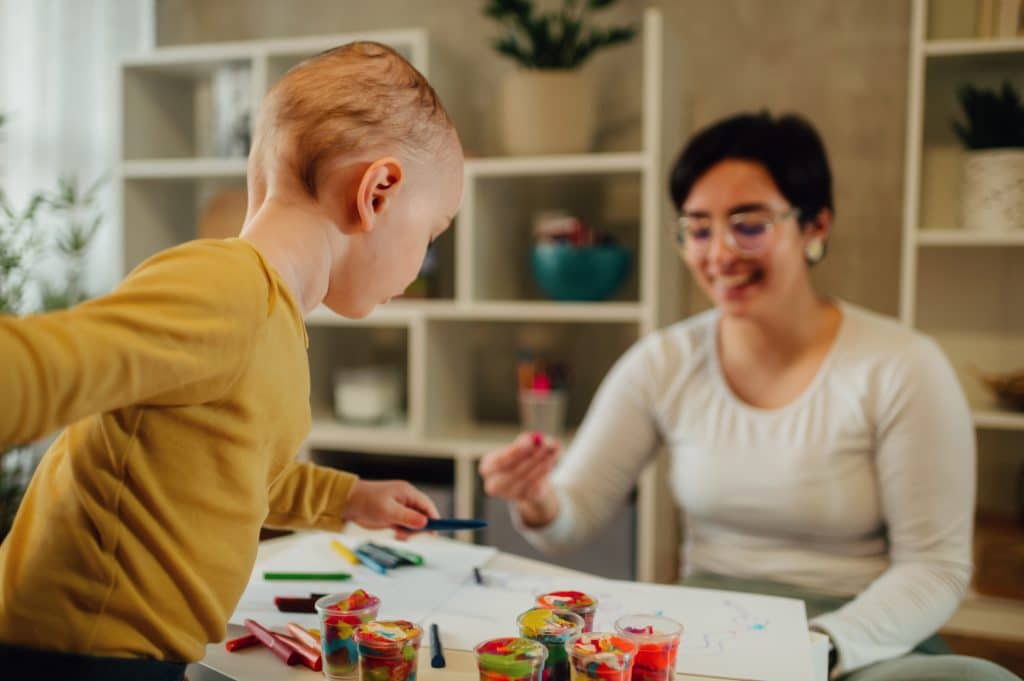Starting ABA therapy (Applied Behavior Analysis) can be a transformative journey for your child, helping them learn valuable life skills, improve behavior, and reach developmental milestones. However, preparing your child—and yourself—for ABA therapy can make a significant difference in ensuring long-term success.
Frances Fishman, the founder of The Play Base, explains, “ABA therapy is most effective when both the child and the family are fully engaged. Preparation plays a key role in setting a positive tone for therapy, and parents are crucial partners in their child’s progress.”
In this ultimate guide, we’ll dive deeper into how you can best prepare your child for ABA therapy. Let’s explore practical strategies, expert insights, and detailed steps to maximize your child’s potential.
Understand the Fundamentals of ABA Therapy
The first step in preparing for ABA therapy is understanding what it is and how it works. ABA focuses on improving specific behaviors—like communication, social skills, and self-care—through positive reinforcement and systematic techniques.
Before starting, schedule an ABA therapy consultation with a qualified specialist who can explain the program in detail, tailored to your child’s needs. Frances Fishman recommends, “Parents should familiarize themselves with the methods used in ABA therapy, as this knowledge will allow them to effectively support their child at home.”
Action Step: Read up on ABA therapy resources for parents to help you feel informed and confident. This will help you understand how the therapy integrates into everyday life.
Build a Routine Around ABA Therapy
Routine is crucial in helping children feel secure, especially when introducing a new experience like therapy. Before starting sessions, establish a daily routine that your child can count on. Structure and predictability reduce anxiety and make it easier for your child to adapt to therapy.
“Children often thrive on consistency. When ABA therapy becomes a regular part of the day, it feels less intimidating,” says Fishman.
Tips for Building a Routine:
- Set the same time each day for therapy sessions.
- Use visual schedules to show your child when therapy will take place.
- Gradually ease them into the routine before the actual start of therapy to build familiarity.
Consistency will help your child understand what to expect and make it easier for them to transition into therapy.
Introduce ABA Therapy to Your Child
Introducing ABA therapy to your child is an important step in easing their apprehension. While every child’s communication level differs, it’s helpful to provide a simple, positive explanation of what ABA therapy involves.
Fishman advises, “Frame the therapy as an opportunity for your child to have fun while learning new things. Make it sound like an exciting adventure.” You might say something like, “We’re going to work with a teacher who will help us play games and learn new things!”
Pro Tip: Use storybooks, visuals, or even role-play scenarios to help your child understand what therapy might look like. This prepares them mentally for what’s to come.
Emphasize Positive Reinforcement at Home
Positive reinforcement is at the core of ABA therapy. Practicing this at home before therapy begins can help your child adjust to the strategies used during sessions. Reinforcing positive behavior at home—by rewarding your child for their efforts and progress—creates a supportive environment.
“Parents can be one of the biggest reinforcers in a child’s life. By praising your child for small victories, you’re helping them associate learning with positive feelings,” says Fishman.
Actionable Strategies:
- Use a sticker chart or small rewards to encourage positive behavior.
- Celebrate small milestones and encourage effort, not just outcomes.
- Practice patience, and always acknowledge progress with enthusiasm.
These reinforcement techniques will prepare your child for the same practices used in therapy sessions.
Stay Actively Involved in the Therapy Process
One of the most effective ways to ensure your child’s success in ABA therapy is to stay involved. Attend therapy sessions, ask questions, and collaborate with your child’s therapist to understand what’s working and how you can support the learning process at home.
Fishman emphasizes, “The parent-therapist relationship is critical. Open communication allows for a collaborative approach where parents can practice at home what is being taught in therapy.”
How to Get Involved:
- Schedule regular progress meetings with the therapist.
- Practice the skills your child is learning during therapy at home.
- Ask for an ABA therapy preparation checklist so you can follow along with their progress.
Active participation reinforces what your child learns in therapy, making progress more sustainable.
Build a Support System
Starting ABA therapy can sometimes feel overwhelming, but you don’t have to do it alone. A solid support system, including family members, friends, and other parents who have gone through ABA therapy, can be a great resource.
“Having a network of support makes the journey easier,” says Fishman. “You can share experiences, ask for advice, and find comfort knowing others are on a similar path.”
Action Step: Look for local support groups or online forums where you can connect with other parents. Your ABA therapy provider can also recommend resources to help you build this community.
Maintain Open Communication with Your Therapist
A successful ABA therapy program depends on clear and continuous communication between you and the therapist. Regular updates and discussions about your child’s progress help keep everyone on the same page.
“Therapists can offer insights into your child’s progress that you may not immediately notice at home,” says Fishman. “It’s essential to share what’s working and any challenges you observe so that the therapy can be adjusted accordingly.”
Pro Tip: After each session, ask for a summary of what was covered and what you can do to reinforce learning at home. Make sure you understand the goals and techniques being used.
Set Realistic Expectations
While ABA therapy is highly effective, it’s important to set realistic expectations for your child’s progress. Every child learns at their own pace, and success looks different for each individual. Rather than focusing on quick results, celebrate gradual progress and small achievements along the way.
Fishman reminds parents, “Progress in ABA therapy is a journey, not a race. Focus on growth, even if it’s slow. Each step forward is a victory.”
Helpful Mindset:
- Be patient and avoid comparing your child’s progress to others.
- Keep track of milestones, no matter how small.
- Understand that therapy takes time, and success builds incrementally.
Prepare for the First Session
The first therapy session can set the tone for the overall experience, so it’s important to prepare well in advance. Help your child feel calm and ready by taking a few simple steps before the session begins.
Fishman suggests, “Preparing your child for the first session reduces the fear of the unknown and helps them feel more secure.”
Tips for the First Session:
- Bring a comfort item, such as a favorite toy or blanket.
- Ensure your child is well-rested and fed before the session.
- Arrive early to give your child time to acclimate to the new environment.
These small actions can ease any anxiety your child may feel and set a positive tone for future sessions.
Reinforce Consistency at Home
ABA therapy is most successful when the strategies learned during sessions are consistently reinforced at home. By practicing the skills your child learns in therapy in everyday situations, you help them solidify their new abilities.
Fishman emphasizes, “Therapy doesn’t stop when the session ends. Parents play a vital role in continuing the learning process at home. Consistency is key to long-term success.”
How to Reinforce Therapy at Home:
- Practice communication skills, such as using simple language or picture boards, in daily routines.
- Incorporate self-care and social skills into playtime or mealtime.
- Keep practicing, even when progress seems slow, to maintain a steady learning curve.
Helping Your Child Thrive in ABA Therapy
Preparing your child for ABA therapy is an important step in unlocking their potential and setting them up for long-term success. With the right strategies, a supportive environment, and active involvement in the therapy process, you can make a lasting impact on your child’s growth and development.
If you’re ready to get started or need more guidance, The Play Base is here to help. “Our team is dedicated to creating individualized programs that meet each child’s unique needs,” says Frances Fishman. “Together, we can help your child thrive.”
Contact The Play Base today for an ABA therapy consultation and find out how we can support your child’s journey to success!









